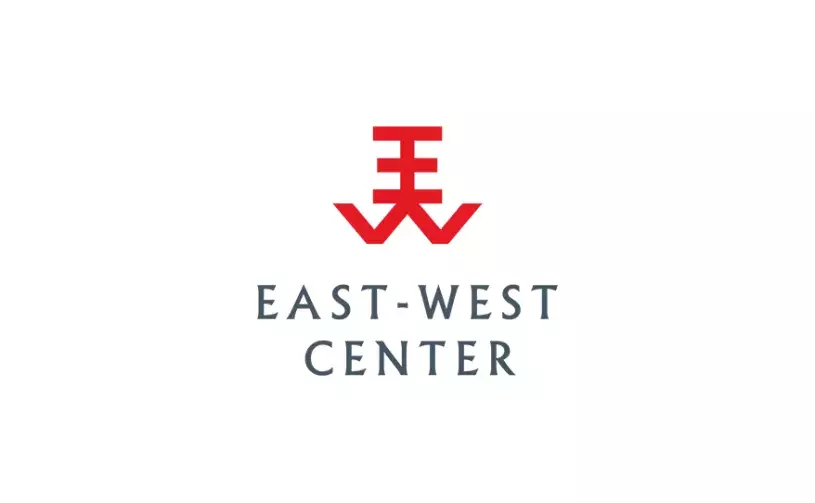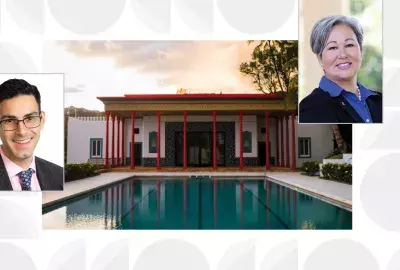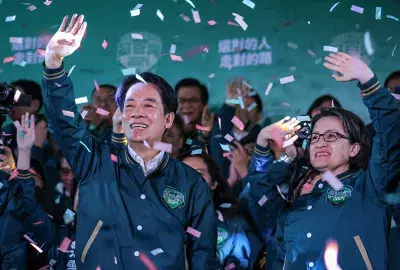Error message

By Marcus Noland
HONOLULU (Jan. 8, 2019)—While there is little doubt that trade policy under the Trump administration is protectionist, there is uncertainty about the administration’s goals and how far it is willing to push confrontational tactics in their pursuit. Less appreciated is that the recent renegotiation of the North American Free Trade Agreement (NAFTA), now known as the United States Mexico Canada Agreement (USMCA), contains the seeds of a considerable rise in trade barriers between the US and Asia.
The Trump administration has identified a variety goals for US trade policy, including reducing the overall trade deficit (as well as bilateral deficits with individual countries), renegotiating or abandoning “disastrous” trade agreements, and rebuilding the domestic manufacturing base, in part by encouraging firms to restructure global supply chains and “re-shore” production to the US.
The administration’s tools include aggressively using anti-dumping, countervailing duty, unfair trade (Section 301), and national security (Section 232) statutes of US trade law to increase import restrictions, focusing primarily on China. Other tools include renegotiating existing trade deals, most importantly NAFTA, and hamstringing the World Trade Organization’s dispute-settlement procedures to prevent any rulings that could go against the US.
The Trump Administration has greatly intensified the application of several special forms of protection. In the process, the Administration is “self-initiating” cases at an unprecedented rate, meaning that the government brings the case itself without waiting for industry to file a complaint. This development is important because, historically, self-initiated cases are likely to result in protection being imposed and imposed at higher rates. Particularly worrisome is the use of Section 232 on national security insofar as the statute is written very broadly and is open for abuse. Its use by the US practically invites other countries to emulate.
Today, about 12 percent of US imports are under “special protection,” usually entailing anti-dumping or countervailing duty measures levied on specific foreign firms. If the administration were to carry through on its threat to retaliate on the remainder of Chinese imports not currently covered by special protection, that figure would double. If the administration were to impose Section 232 protection on autos as is currently under consideration, that would mean another 15 percent of imports would come under special protection. In short, the administration is contemplating putting 40 percent of US imports under special protection.
China and others have already put restrictions on 8 percent of US exports in response to American actions. All things being equal, this figure will rise if the administration makes good on its threats to impose more protection. The two key drivers are the NAFTA renegotiation and concerns about China.
The NAFTA renegotiation, like the earlier renegotiation of the Korea-US Free Trade Agreement, has had the effect of weakening the agreement and moving the United States away from free trade. While some commentators refer to the unpronounceable USMCA as NAFTA 2.0, perhaps NAFTA 0.8 would be more accurate.
While the renegotiation did yield some useful modernizations, these were taken part and parcel from the Trans-Pacific Partnership (TPP) negotiation, even though Trump withdrew the US from the TPP during his first week in office. If the administration had not withdrawn from the TPP, the beneficial parts of USMCA could have been achieved not only with Canada and Mexico, but also with a larger set of partners in Asia and the Pacific.
One negative component of the USMCA is a convoluted sunset provision, which could potentially trigger dissolution of the agreement. This provision is designed to create uncertainty about the policy environment and hence deter investment in Mexico.
The USMCA also introduces disruptive provisions for the auto sector. The new auto rules of origin both increase regional content and stipulate that a certain share of value added be produced above specific wage rates. These provisions significantly increase production costs in Mexico.
Since the US auto tariff is only 2.5 percent, companies are likely to simply ignore the rules of origin and pay the tariff. To prevent them from doing so, the administration has initiated a Section 232 case that proposes to introduce a 25-percent tariff on autos.
The threat to impose this level of protection on autos has set off a scramble among third-country producers—principally Japan, the European Union, and South Korea—to obtain exemptions. The Japanese are preparing for negotiations, and the Koreans have requested, but not received, assurance that they will be exempt from the higher tariff given their status as a free-trade partner.
As the price, however, the US is demanding voluntary export restraints (VERs). These are a particularly undesirable policy instrument. Unlike tariffs, which at least yield revenue for the US Treasury, the revenue generated by VERs is captured by foreign countries. A foreign government might obtain funds, for example, by auctioning off a license to export a specified amount of product to the US. To boot, the instrument is inconsistent with the WTO.
Worse yet, preliminary modeling suggests that by raising costs in North America and raising prices to the consumer, these policies may have the impact of reducing employment in parts, assembly, and distribution in the US.
With respect to China, the administration has cited a shifting set of justifications for the imposition of tariffs, including:
- Reducing the trade imbalance
- Increasing exports
- Curbing China’s steelmaking capacity
- Stopping intellectual-property rights abuse
- Ending China’s 2025 industrial policy
- Slowing US foreign direct investment in China
- Deterring Chinese investment in the US high-technology sector
- Pressuring China to stop purchasing Iranian oil and gas
A recent speech by Vice President Pence made clear that the Trump Administration regards China as posing a threat to the US and its allies—and not just in the economics sphere. The Trump trade moves should be interpreted as one component of an emerging containment policy.
The question remains whether the threatened and imposed tariffs are a means to such an end or goals in themselves. One hopes that the administration’s actions over the past year amount to an elaborate negotiating ploy that will ultimately deliver a more open trading system. The president says that this is his aim.
But the oft-cited targets of reducing trade deficits—including bilateral deficits—and reshoring production to the US suggest that the administration’s trade measures may be ends in themselves. Regrettably, they are unlikely to contribute significantly to achieving their purported goals. They are much more likely to risk conflict with US trading partners in Asia and slow down productivity and long-term income growth in the US.
Marcus Noland is a Non-Resident Senior Fellow at the East-West Center and Executive Vice President and Director of Studies at the Peterson Institute for International Economics in Washington, DC.
Download a pdf version of this Wire article.
##
The East-West Wire is a news, commentary, and analysis service provided by the East-West Center in Honolulu. All or any part of the Wire content may be used by media with attribution to the East-West Center or the person quoted. To receive Wire articles via email, subscribe here. For links to all East-West Center media programs, fellowships and services, see www.eastwestcenter.org/journalists.
The full list of East-West Wires produced by the Research Program is available on the East-West Center website. For more on the East-West Center Research Program, see www.eastwestcenter.org/research.
The East-West Center promotes better relations and understanding among the people and nations of the United States, Asia, and the Pacific through cooperative study, research, and dialogue.
Series editors:
Derek Ferrar
[email protected]
Sidney B. Westley
[email protected]
By Marcus Noland
HONOLULU (Jan. 8, 2019)—While there is little doubt that trade policy under the Trump administration is protectionist, there is uncertainty about the administration’s goals and how far it is willing to push confrontational tactics in their pursuit. Less appreciated is that the recent renegotiation of the North American Free Trade Agreement (NAFTA), now known as the United States Mexico Canada Agreement (USMCA), contains the seeds of a considerable rise in trade barriers between the US and Asia.
The Trump administration has identified a variety goals for US trade policy, including reducing the overall trade deficit (as well as bilateral deficits with individual countries), renegotiating or abandoning “disastrous” trade agreements, and rebuilding the domestic manufacturing base, in part by encouraging firms to restructure global supply chains and “re-shore” production to the US.
The administration’s tools include aggressively using anti-dumping, countervailing duty, unfair trade (Section 301), and national security (Section 232) statutes of US trade law to increase import restrictions, focusing primarily on China. Other tools include renegotiating existing trade deals, most importantly NAFTA, and hamstringing the World Trade Organization’s dispute-settlement procedures to prevent any rulings that could go against the US.
The Trump Administration has greatly intensified the application of several special forms of protection. In the process, the Administration is “self-initiating” cases at an unprecedented rate, meaning that the government brings the case itself without waiting for industry to file a complaint. This development is important because, historically, self-initiated cases are likely to result in protection being imposed and imposed at higher rates. Particularly worrisome is the use of Section 232 on national security insofar as the statute is written very broadly and is open for abuse. Its use by the US practically invites other countries to emulate.
Today, about 12 percent of US imports are under “special protection,” usually entailing anti-dumping or countervailing duty measures levied on specific foreign firms. If the administration were to carry through on its threat to retaliate on the remainder of Chinese imports not currently covered by special protection, that figure would double. If the administration were to impose Section 232 protection on autos as is currently under consideration, that would mean another 15 percent of imports would come under special protection. In short, the administration is contemplating putting 40 percent of US imports under special protection.
China and others have already put restrictions on 8 percent of US exports in response to American actions. All things being equal, this figure will rise if the administration makes good on its threats to impose more protection. The two key drivers are the NAFTA renegotiation and concerns about China.
The NAFTA renegotiation, like the earlier renegotiation of the Korea-US Free Trade Agreement, has had the effect of weakening the agreement and moving the United States away from free trade. While some commentators refer to the unpronounceable USMCA as NAFTA 2.0, perhaps NAFTA 0.8 would be more accurate.
While the renegotiation did yield some useful modernizations, these were taken part and parcel from the Trans-Pacific Partnership (TPP) negotiation, even though Trump withdrew the US from the TPP during his first week in office. If the administration had not withdrawn from the TPP, the beneficial parts of USMCA could have been achieved not only with Canada and Mexico, but also with a larger set of partners in Asia and the Pacific.
One negative component of the USMCA is a convoluted sunset provision, which could potentially trigger dissolution of the agreement. This provision is designed to create uncertainty about the policy environment and hence deter investment in Mexico.
The USMCA also introduces disruptive provisions for the auto sector. The new auto rules of origin both increase regional content and stipulate that a certain share of value added be produced above specific wage rates. These provisions significantly increase production costs in Mexico.
Since the US auto tariff is only 2.5 percent, companies are likely to simply ignore the rules of origin and pay the tariff. To prevent them from doing so, the administration has initiated a Section 232 case that proposes to introduce a 25-percent tariff on autos.
The threat to impose this level of protection on autos has set off a scramble among third-country producers—principally Japan, the European Union, and South Korea—to obtain exemptions. The Japanese are preparing for negotiations, and the Koreans have requested, but not received, assurance that they will be exempt from the higher tariff given their status as a free-trade partner.
As the price, however, the US is demanding voluntary export restraints (VERs). These are a particularly undesirable policy instrument. Unlike tariffs, which at least yield revenue for the US Treasury, the revenue generated by VERs is captured by foreign countries. A foreign government might obtain funds, for example, by auctioning off a license to export a specified amount of product to the US. To boot, the instrument is inconsistent with the WTO.
Worse yet, preliminary modeling suggests that by raising costs in North America and raising prices to the consumer, these policies may have the impact of reducing employment in parts, assembly, and distribution in the US.
With respect to China, the administration has cited a shifting set of justifications for the imposition of tariffs, including:
- Reducing the trade imbalance
- Increasing exports
- Curbing China’s steelmaking capacity
- Stopping intellectual-property rights abuse
- Ending China’s 2025 industrial policy
- Slowing US foreign direct investment in China
- Deterring Chinese investment in the US high-technology sector
- Pressuring China to stop purchasing Iranian oil and gas
A recent speech by Vice President Pence made clear that the Trump Administration regards China as posing a threat to the US and its allies—and not just in the economics sphere. The Trump trade moves should be interpreted as one component of an emerging containment policy.
The question remains whether the threatened and imposed tariffs are a means to such an end or goals in themselves. One hopes that the administration’s actions over the past year amount to an elaborate negotiating ploy that will ultimately deliver a more open trading system. The president says that this is his aim.
But the oft-cited targets of reducing trade deficits—including bilateral deficits—and reshoring production to the US suggest that the administration’s trade measures may be ends in themselves. Regrettably, they are unlikely to contribute significantly to achieving their purported goals. They are much more likely to risk conflict with US trading partners in Asia and slow down productivity and long-term income growth in the US.
Marcus Noland is a Non-Resident Senior Fellow at the East-West Center and Executive Vice President and Director of Studies at the Peterson Institute for International Economics in Washington, DC.
Download a pdf version of this Wire article.
##
The East-West Wire is a news, commentary, and analysis service provided by the East-West Center in Honolulu. All or any part of the Wire content may be used by media with attribution to the East-West Center or the person quoted. To receive Wire articles via email, subscribe here. For links to all East-West Center media programs, fellowships and services, see www.eastwestcenter.org/journalists.
The full list of East-West Wires produced by the Research Program is available on the East-West Center website. For more on the East-West Center Research Program, see www.eastwestcenter.org/research.
The East-West Center promotes better relations and understanding among the people and nations of the United States, Asia, and the Pacific through cooperative study, research, and dialogue.
Series editors:
Derek Ferrar
[email protected]
Sidney B. Westley
[email protected]
East-West Wire
News, Commentary, and Analysis
The East-West Wire is a news, commentary, and analysis service provided by the East-West Center in Honolulu. Any part or all of the Wire content may be used by media with attribution to the East-West Center or the person quoted. To receive East-West Center Wire media releases via email, subscribe here.
For links to all East-West Center media programs, fellowships and services, see www.eastwestcenter.org/journalists.







